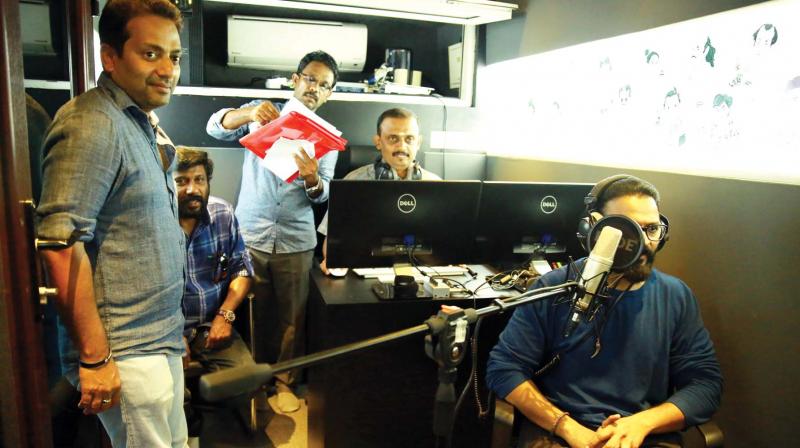Dubbing on the spot, during the shoot
Dubbing on Wheels, a caravan facility which facilitates on-the-spot dubbing at shooting locations, is becoming the directors' favourite.;

In the last 78 years since its birth, the Malayalam film industry has undergone many major changes. Since 1928, Malayalam movies were predominantly filmed inside studios till ace director P. N. Menon decided to bring films out of the studio walls. Later, many changes occurred before and behind the camera. Even then, studio was an integral part of the cinema as the actors had to find time to go to audio consoles to lend their voice for their roles. Now is the time of another renaissance — of the brand new concept ‘Dubbing on Wheels’ which offers space to dub and edit films on the location itself while the shoot happens.
It was on the sets of Siddique’s Fukhri with Jayasurya in the lead, Dubbing on Wheels was introduced. According to the makers, it is for the first time in Indian film industry that such a system is being used for a film. The idea is the brainchild of Jenso Jose, co-producer of Fukhri. “This idea has been in my mind for the past few years since my association with film industry began. As it was an experimental move, we were adamant that it should be launched with our own project to avoid consequences faced by the director, if the system failed. I am
happy to say that ‘Dubbing on Wheels’ is giving good output as we expected from the conception stage,” says Jenso.
‘Dubbing on Wheels’ is essentially a mobile studio designed inside a caravan, which can be parked on shooting sets along with other vehicles. On the computer installed in this air-conditioned vehicle, the film editor can start his work even as the shoot is in progress.
Also, the director can start the dubbing works using the actors available on the sets. The dub tracks are being recorded using rode mic, when the actors can watch their scenes on a 55-inch TV placed at one end. Interestingly, the initial colour correction of the film can also be done in the caravan as the cinematographer can check and fix the colour tone on the spot itself. It is worked with power supplied from the generator, normally used at the locations along with the inbuilt battery.
Director Siddique is happy with the output. “To be frank, this system has helped reduce my work tension during the post-production as majority of the dubbing works could be completed on the sets itself. I could start the dubbing session days after we started the shoot. The main benefit was that we could assign the actors themselves to lend their voice even though they appear in just one scene. Though sync sound system is also there, in out-and-out commercial films, that is not that practical,” he says.
He points out that this system would become more popular as days pass. “It is better for the films which start shooting after fixing the release dates as the makers can start the post-production from the sets itself. But I guess it won’t be practical in other languages such as Hindi, Tamil and Telugu as the actors have to stay back at locations even after completing their shoot for the day. That is not going to happen there,” says the director, who has wielded the megaphone in
films in those languages also.
Actor Jayasurya, who is thrilled about the process, says, “As we are dubbing on the sets itself the character is still within us when we give voice. So we do not need more time to get into the emotions of the role. Normally, we go for dubbing of our previous films from the sets of other films and we would be in the hangover of the character of our ongoing films. For an actor, this system brought a major change in that way,” says the actor, who essays the lead role in Fukhri.
Jenso says that they are planning to bring in more such vehicles with updated mechanism. “From the point of view of a producer, I can proudly say that post production cost could be controlled when compared to the same of other films. We do not need to hire the ‘Dubbing on Wheels’ bus from the very first day of shoot. On the other side, one of the main hurdles in front of us during the conception stage was the ground support. We needed the technical support from a studio and that was how we landed on Chalachithram studio in Ernakulam. Now we have crossed that hurdle. The vehicle is designed by my own firm My Talkies with DD group, when it will be maintained and executed by Chalachithram. As we are getting more queries from other film makers, we are planning to bring more ‘Dubbing on Wheels’ to assist post-production of movies,” he sums up.

